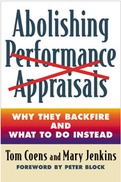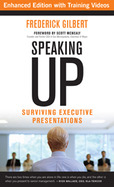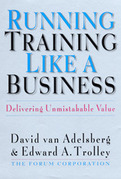• Shows why performance appraisal should be abolished and provides specific guidance on what to do instead
• Provides multiple detailed case studies of organizations that have successfully abolished performance appraisal
• Foreword by Peter Block
Performance appraisals are used in the overwhelming majority of workplaces. Yet, most organizations that use appraisal-and a similar percentage of givers and receivers of appraisal-are dissatisfied with the process. Many are beginning to deeply question whether appraisal is necessary and consistent with the work culture espoused by progressive organizations. Abolishing Performance Appraisals provides an insightful, well documented look at the flaws of appraisal-including its destructive, unintended effects-and offers practical guidance to organizations that want to move on to more progressive approaches to coaching, feedback, development, and compensation.
While many books prescribe cures for appraisal, this is the first to focus exclusively on eliminating appraisal altogether and creating alternative, non-appraisal approaches based upon progressive and healthier assumptions about people. The authors expose and dispel the widely accepted myths and false assumptions that underlie common management strategies surrounding the five key functions of appraisal-coaching, feedback, development, compensation, and legal documentation. They then offer step-by-step practical guidance on implementing alternative non-appraisal strategies that deliver the objectives of each function. And they suggest ways to give supervisors and managers the freedom to choose for themselves the most effective ways of working with people.
Filled with real-life examples, resources, tools, and detailed practical advice, Abolishing Performance Appraisals is an entirely fresh and radically different view of performance appraisal and its functions that will help people start over and discover new and more effective approaches.
- The first book to focus on presenting to senior managementpeople with very specific expectations and requirements and the power to make or break careers
- Draws on interviews with more than fifty C-level executives
- Includes nine chapters containing QR codes for free videos on the chapter topics
- Click here for the press release
There are two times when youre alone in life: one is when you die, and the other is when you present to senior management.
Rick Wallace, CEO, KLA-Tencor
If you are in middle management, you live with daily ambiguity, lack of control, and even chaos. To get anything done, you must present your ideas to decision makers, and those presentations can be brutal. Careers and projects can come unwound in a matter of minutes if a presenter at the top level doesnt know the rules.
Fear in the middle creates fog at the top, and bad decisions are made. The stakes are highone presentation can make or break a careerbut the rules are utterly unclear. Or at least they used to be.
Speaking Up is an indispensable resource for anyone who needs to know how to present to those higher up the chain. It offers revelatory insights into the minds of the men and women at the topinformation that is crucial to understanding what theyre looking for from presenters. Tactics and techniques that work well with peers, subordinates, and immediate supervisors may actually work against you when presenting up the chain.
Psychologist and coach Frederick Gilbert shows why these high-level presentations are about one thing: delivering information to help extremely talented, highly stressed people make good decisionsfast.
Gilbert focuses on three simple rules for speaking up: (1) know the people, (2) get to the point, and (3) improvise. Based on ten years of research and hundreds of interviews, Gilberts book is unique in featuring extensive comments from executives explaining exactly what they want and dont want in a presentation, as well as midlevel managers stories of triumphs and tragedies and what they learned as a result. This a must-read book for surviving high-stakes meetings.
2013
This book takes on the "play to your strengths" fad to show how your strengths can actually betray you.
Takes on the "play to your strengths" fad to show how your strengths can actually betray you- Features tools for keeping your strengths in balance as well as numerous examples of executives from varied backgrounds and companies
- Published in collaboration with the Center for Creative Leadership, a top-ranked, global provider of executive and leadership education
Once you've discovered your strengths, you need to discover something else: your strengths can work against you. You can have too much of a good thing.
Many leaders know this on some intuitive level, and they see it in others. But they don't see it as clearly in themselves. Mainly, they think of leadership development as working on their weaknesses. No wonder. The tools used to assess managers are not equipped to pick up on overplayed strengths. Nowhere in most assessments is there language or diagnostics that can reveal when someone is overdoing it-when more is not better.
Nationally recognized leadership experts Bob Kaplan and Rob Kaiser have conducted thousands of assessments of senior executives designed to determine when their strengths are betraying them. They draw on their data to identify four fundamental leadership qualities, each positive in and of itself but each of which, if overemphasized, can seriously compromise your effectiveness. Most leaders, they've found, are "lopsided"-they favor certain qualities to the exclusion of others without realizing it. The trick is to keep all four in balance.
Consider Steve Jobs, who was fired from Apple because of his lopsided emphasis on grand strategic vision. It was when he returned and corrected that lopsidedness-exemplified in his mantra "real artists ship"-that Apple became the powerhouse it is today.
Fear Your Strengths provides tools to help you become aware of your leadership leanings and excesses and provides insights for combatting the mindset that encourages them. It offers a practical psychology of leadership, a better way for leaders to calibrate their performance, one that is truer to the realities of managerial work.
- Addresses training's central challenge-how to meet organizational demands for clear business value
- Provides fresh and powerful strategic perspectives and tools to take training out of the limbo between "doing good" and delivering unmistakable value to the business, through a strategic assessment of training operations
- Draws on the authors' great successes running training like a business at major international corporations, including DuPont, Moore Corporation, and NatWest
- Sets out the steps training organizations must take to transform themselves into operating like a business
The three books in the series are:
How to Succeed in Your First Job: Tips for New College Graduates
Helping Your New Employee Succeed: Tips for Managers of New College Graduates
So, You're New Again: How to Succeed When You Change Jobs
Built around author Ed Holton's dynamic 12-step process-extensively field-tested and firmly grounded in research-these three volumes give new college graduates and their supervisors, as well as seasoned professionals who've changed jobs, essential insights and tools for mastering a variety of transition challenges.
Given the high costs associated with new employee turnover, no organization can afford to leave the new employee assimilation process to chance. Corporate human resources directors, managers of new employees, individual employees making job transitions, and career counselors alike will find powerful and practical new ideas and tools in these essential handbooks.
- Helps new college graduates understand and adapt to the culture of an organization-the real key to long-term success
- Uses a dynamic, field-tested, easy-to-follow 12-step process
Uses a clever and fun parable to identify what excellence is, how we lose it, and how we can regain it.
- Cowritten by two bestselling authors: Harry Paul, coauthor of Fish! (over 5 million copies sold), and John Britt, coauthor of Who Killed Change? (over 100,000 copies sold)
- Uses a clever and fun parable to identify what excellence is, how we lose it, and how we can regain it and ensure it becomes an integral part of our lives
- Offers tools, action steps, and examples to help readers achieve professional and personal excellence
Most companies talk about excellence, but what does excellence really mean? What specific attitudes and practices lead to excellence? Drawing on years of study and decades of experience, authors Harry Paul, John Britt, and Ed Jent have zeroed in on five core qualities of excellence. In this entertaining and enlightening book, they tell how to give and be your best in each of these five critical dimensions and foster excellence in your organization and in your life.
The book begins with a crime being committed: Excellence (personified) has been kidnapped, and Leadership assembles Excellence's team (Passion, Flexibility, Communication, Competency, and Ownership) and challenges them to work together to get their Excellence back.
And who is the culprit? It is Average who has kidnapped Excellence and replaced Excellence's team with his own: N. Different, N. Ept, N. Flexible, Miss Communication, and Poser. But a mysterious ransom note sparks a struggle between Average and Excellence.
Integrated into this tale of organizational excellence is the story of Dave, a delivery man. The kidnapping causes Dave to contemplate his own life and relationships in a way that makes the paths of personal and organizational excellence cross and intertwine. Who Kidnapped Excellence? is a parable that helps organizations and individuals achieve their best in every aspect of their lives.




























